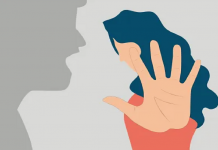This article has been written by Saloni Chitlangia pursuing the Diploma in Intellectual Property, Media and Entertainment Laws from LawSikho. This article has been edited by Zigishu Singh (Associate, Lawsikho) and Smriti Katiyar (Associate, Lawsikho).
Table of Contents
Introduction
Sexual harassment is one of the most prevelant socal problems that exist today, and it can happen to any individual, regardless of their age, sexual identity or gender identity. While employees have the right to freedom from sexual discrimination and harassment at the workplace, workplace harassment has escalated to a great extent in the recent years
What is sexual harassment?
Sexual harassment is an unwelcome advance of a sexual nature which results in unreasonable interference with the individual’s work performance or creates an intimidating, hostile, abusive, or offensive working environment and can take various forms such as physical, verbal, non-verbal, and visual. Being a social problem, it consequently causes problems such as loss of job, dignity, social status, and in some cases loss of life as well.
Sexual harassment at workplace includes making undesirable requests for sexual favors, making inappropriate and displeasing comments about someone’s body or appearance, saying inappropriate things,making fun of someone of a specific gender and using gender-based slurs, and making vulgar, derogatory, or offensive jokes about sex or sexual acts. It also includes sending and sharing emails and messages of sexual nature, unwanted or inappropriate touching of any body part, hugging, kissing, leering or making gestures by blocking someone’s movement, sending or sharing vulgar pictures or pornography ortrying to create a hostile work environment. For something to be considered sexual harassment, the opinion of the harasser is irrelevant. It is only what the individual who is being harassed thinks of the incident and if they believe it to be offensive.
The prevalent gender inequality
When one thinks of sexual harassment, one immediately thinks of male workers harassing or propositioning female co-workers. People mistakenly believe that sexual harassment is restricted only to women. How many times do we hear in the media that a man is being sexually abused? It has been portrayed by the media and other sources that women are helpless, that they are damsels in distress and are subservient to men. This is accurate to a certain extent as not all men tyrannize or abuse women.
Men and women were created in the same image to enjoy equal participation in all opportunities, rights, and also protection. But for eons, it has been thought that women are naive and that men are the mighty ones and stereotypes like these have been instilled in the minds of children. Patriarchy is not only the root cause of problems faced by women but has also created many setbacks for men. It forces men to be in predetermined notions; where they have to live up to the toxic masculinity and behave in a certain way. Because the culture of masculinity is so strong, men who are sexually harassed at the workplace face additional challenges because of the stereotypes while some others do not even realize when they have been sexually abused. Stigma and gender norms surely affect how men report sexual harassment, and also act as a barrier to report the crime. As a result, men are reluctant to report the crime or come forward because of the social norms that say sexual harassment is not a male issue. Men are also reluctant to complain due to the misuse of sexual harassment laws by women and the filing of fale complaints.
Article 14 of the Constitution of India, which is our Fundamental Right, specifies the right to equality. But the legislation has a greater focus on the issues that are faced by women. The government has made effective laws for preventing sexual harassment at the workplace for women but there has also been a slow rise in the cases of sexual harassment against men. The majority of the laws in India negate the fact that men can also be victims to sexual harassment. Sections 354, 354B, 354C, 354D of the Indian Penal Code,1860 deal with sexual harassment, stalking, etc but all these sections are primarily concerned with women. The Sexual Harassment of Women at Workplace (Prevention, Prohibition and Redressal) Act, 2013 only refers to “women” and it specifies certain remedies and provisions for women who have been harassed. This act recognizes sexual harassment as a violation of the fundamental rights only of a woman and their right to life and dignity and to carry on their profession in an environment free of sexual harassment.
However, sexual harassment has nothing to do with gender, it is about the person who is in power. In the current situations where women are also in powerful positions at the workplace, there is no reason why a woman in power cannot be abusive and vituperative. While there is vast majority of sexual harassment cases that are filed by women, yet there are a number of cases involving female on male workplace sexual harassment and male-on-male workplace sexual harassment claims have also been becoming more common. These include instances of refusing sexual advances, unwelcome touching, and being subjected to offensive sexual comments and jokes. Thus, it is a gender biased law that violates Article 14 as it protects only women who have been harassed.
Sexual harassment against men at the workplace is an overriding issue and it is very important to discuss the concern of rising crime against men. It is necessary to create an equal awareness about the sexual harassment at workplace, which will happen only when we realize that women are not the only victims to sexual assault. We cannot ignore sexual harassment against men and there has to be an equal access to justice in case of all genders. There is a need for laws where men will be given equal protection as women since everyone regardless of their gender is entitled to the right to live free of harassment. We need to make an environment which does not create any discrimination between the genders as sexual offences are serious crime and they need to be prevented. This will only be possible if men are also given equal rights and remedies. The need of the hour is to stop sexual harassment at workplace and to make laws that are gender-neutral: whether male, female or transgender.
Conclusion
Thus, the main issue regarding sexual harassment is that the victim can be of any gender and every gender should feel safeguarded by the laws and this will only be possible through equal protection under the laws. If the crime is gender-neutral the laws also need to be gender-neutral. If we live in a society that treats women and men equally then this balance should be reflected in the laws. Laws need to be made that are gender-neutral and not that are confined to only one section of the society thus emphasizing on the equal treatment of people of any gender. In a society where women are still hesitant to complain that they have been sexually harassed, it takes a lot of courage for a man to speak up and hence he should feel equally comfortable to come out and complain and object about the issues without the fear of being disregarded. However, the problems faced by them are not taken into consideration as people think that men are strong and that they are manly enough to deal with it. They are expected to take these incidents in a fun-spirited manner and not to feel uncomfortable. In fact, until now neither there is a law to punish a person for molesting or sexually harassing a man nor a forum where they can talk about it safely.
Hence, there is a need for laws where men will be given equal protection as women as everyone regardless of their gender has the right to live free of harassment. We need to make an environment that does not create any discrimination between the genders. This will only be possible when we realize that women are not the only victims to sexual assault and men are also given equal rights and remedies. While India legislated the Sexual Harassment of Women at Workplace Act, 2013 which recognized sexual harassment at workplace for women 8 years back, India needs to understand the ambiguity in the law and should amend the Act by bringing in the harassment of Men under the purview of the Act. Effective protection needs to be provided by the constitution to all persons vulnerable to sexual assault. The social stigmas attached to this need to be broken, awareness needs to be created and this will only be possible when a person who is sexually abused complains about it. Men too need to stand up and come forward and complain to break the social stigmas related to them. But this is a two-way process and first, we as a society need to accept that men too can be victims of sexual assault.
Students of Lawsikho courses regularly produce writing assignments and work on practical exercises as a part of their coursework and develop themselves in real-life practical skills.
LawSikho has created a telegram group for exchanging legal knowledge, referrals, and various opportunities. You can click on this link and join:https://t.me/joinchat/J_0YrBa4IBSHdpuTfQO_sA
Follow us on Instagram and subscribe to our YouTube channel for more amazing legal content.
 Serato DJ Crack 2025Serato DJ PRO Crack
Serato DJ Crack 2025Serato DJ PRO Crack











 Allow notifications
Allow notifications



